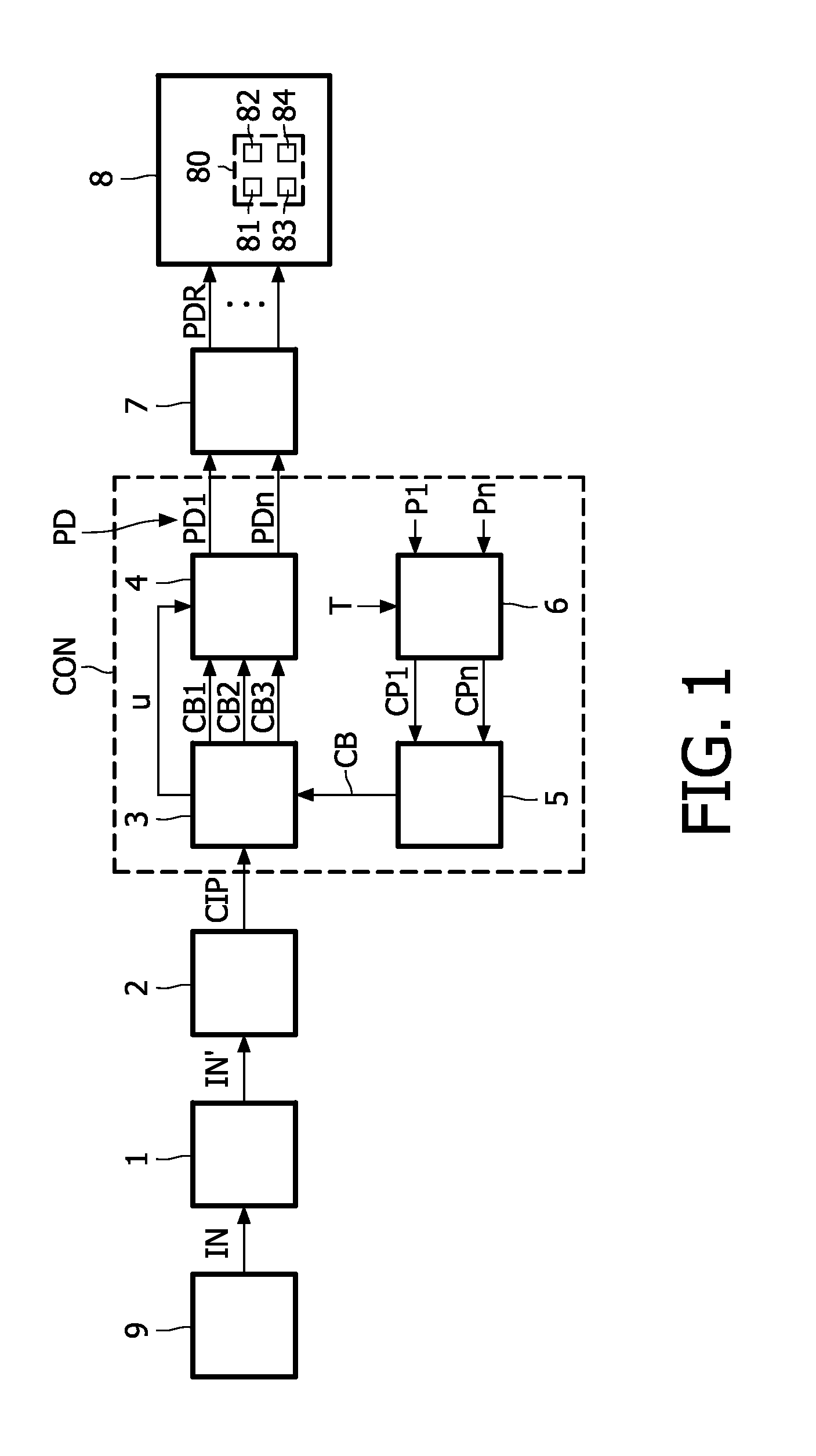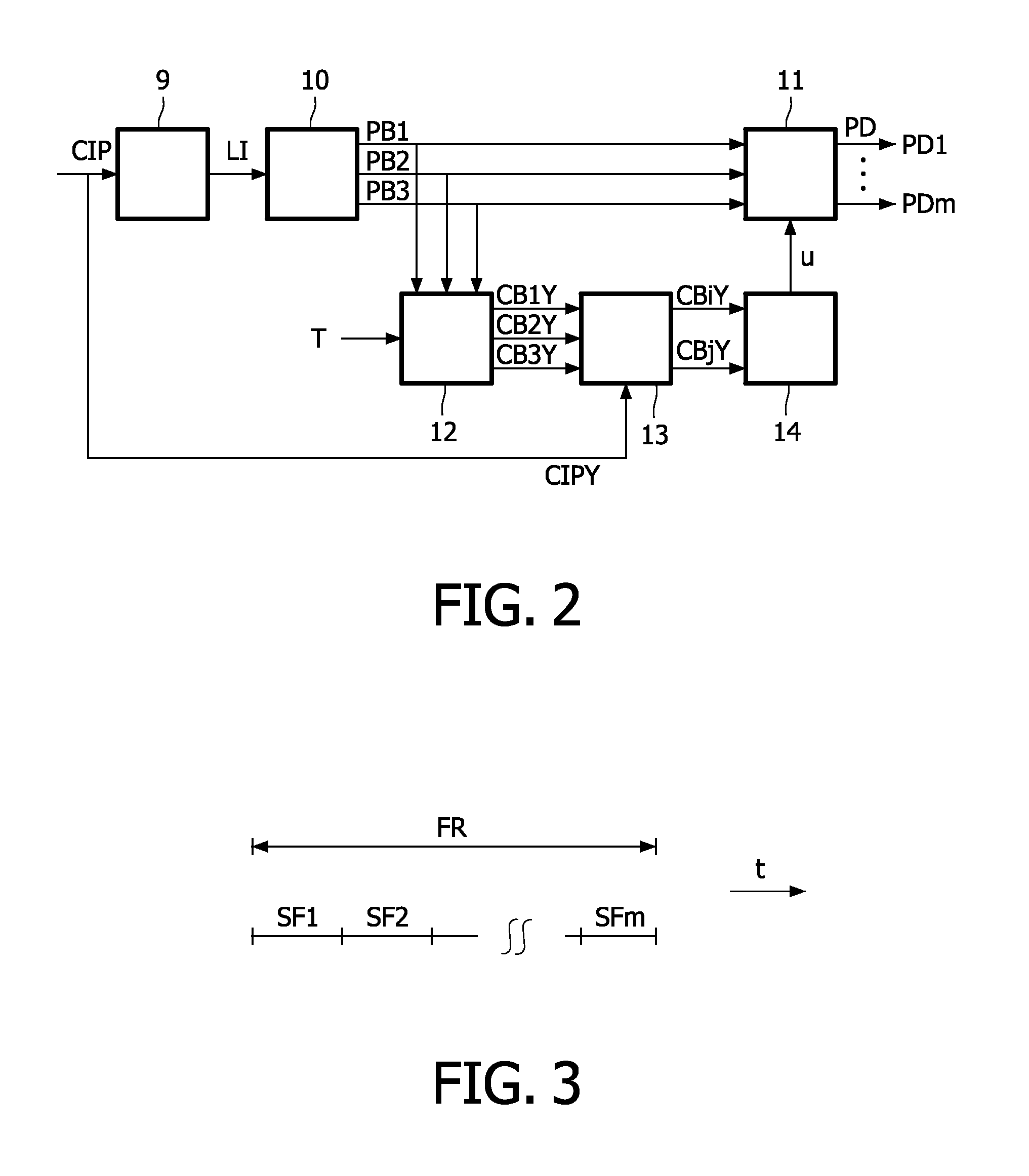Colour conversion for a multy-primary display
- Summary
- Abstract
- Description
- Claims
- Application Information
AI Technical Summary
Benefits of technology
Problems solved by technology
Method used
Image
Examples
Embodiment Construction
[0037]FIG. 1 shows a block diagram of a display apparatus with circuit for performing a multi-primary conversion in accordance with an embodiment of the invention. The circuit CON which performs the multi-primary conversion comprises a boundary vector determining circuit 3, an interpolating circuit 4, a transforming circuit 6, and a boundary constructing circuit 5. The display apparatus comprises an optional transforming circuit 2, a drive circuit 7, and a display device 8.
[0038]The source gamma operation is performed by the optional block 1 which receives an input signal IN, for example from a camera 9 and supplies a signal IN′ which has been gamma pre-corrected. If the input signal is gamma pre-corrected, or is not defined in a linear color space due to another reason, the optional transforming block 2 transforms the signal IN′ from the non-linear color space to a linear color space to obtain the input signal CIP for the multi-primary converter CON. If the signal inputted to the m...
PUM
 Login to View More
Login to View More Abstract
Description
Claims
Application Information
 Login to View More
Login to View More - R&D Engineer
- R&D Manager
- IP Professional
- Industry Leading Data Capabilities
- Powerful AI technology
- Patent DNA Extraction
Browse by: Latest US Patents, China's latest patents, Technical Efficacy Thesaurus, Application Domain, Technology Topic, Popular Technical Reports.
© 2024 PatSnap. All rights reserved.Legal|Privacy policy|Modern Slavery Act Transparency Statement|Sitemap|About US| Contact US: help@patsnap.com










